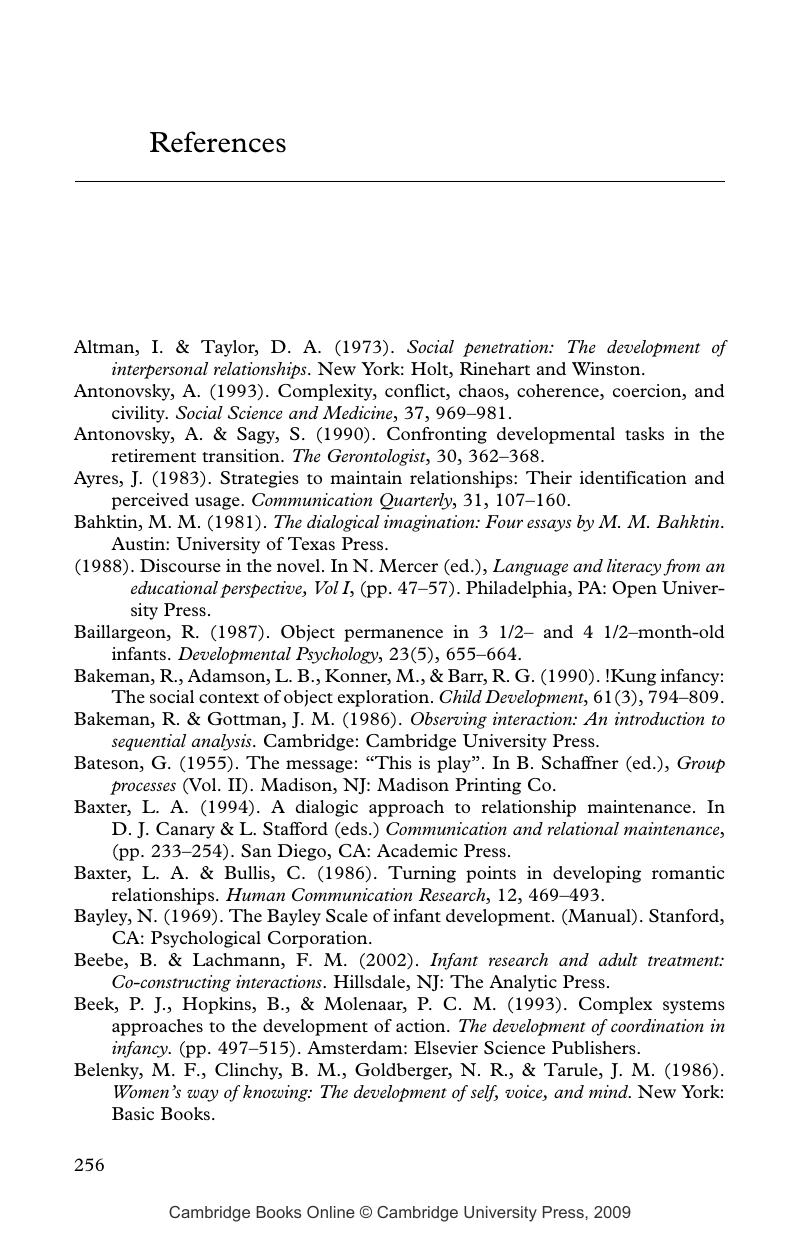Book contents
- Frontmatter
- Contents
- List of figures
- List of tables
- Acknowledgments
- Prologue Overview of the research problem and summary of findings
- 1 Relationships as developing systems: theoretical foundations
- 2 Mother-infant relationship development in the first six months: from face-to-face play to object play
- 3 Relational-historical research on developmental change
- 4 Relational-historical research: the multiple case study approach, frame analysis, qualitative and quantitative analysis
- 5 Research propositions about relationship change processes
- 6 Research methods for the current investigation: subjects, procedures, and data analysis
- 7 Results of the current investigation: quantitative analysis of developmental changes in relationship frames and in infant actions
- 8 Results of the current investigation: qualitative analysis of Richard and his mother
- 9 Results of the current investigation: qualitative analysis of Betsy and her mother
- 10 Results of the current investigation: qualitative analysis of Lewis and his mother
- 11 Results of the current investigation: qualitative analysis of Susan and her mother
- 12 Summary of findings on relational-historical change
- Epilogue Laws of change: implications for theory and practice
- References
- Author index
- Subject index
- References
References
Published online by Cambridge University Press: 22 September 2009
- Frontmatter
- Contents
- List of figures
- List of tables
- Acknowledgments
- Prologue Overview of the research problem and summary of findings
- 1 Relationships as developing systems: theoretical foundations
- 2 Mother-infant relationship development in the first six months: from face-to-face play to object play
- 3 Relational-historical research on developmental change
- 4 Relational-historical research: the multiple case study approach, frame analysis, qualitative and quantitative analysis
- 5 Research propositions about relationship change processes
- 6 Research methods for the current investigation: subjects, procedures, and data analysis
- 7 Results of the current investigation: quantitative analysis of developmental changes in relationship frames and in infant actions
- 8 Results of the current investigation: qualitative analysis of Richard and his mother
- 9 Results of the current investigation: qualitative analysis of Betsy and her mother
- 10 Results of the current investigation: qualitative analysis of Lewis and his mother
- 11 Results of the current investigation: qualitative analysis of Susan and her mother
- 12 Summary of findings on relational-historical change
- Epilogue Laws of change: implications for theory and practice
- References
- Author index
- Subject index
- References
Summary

- Type
- Chapter
- Information
- Change Processes in RelationshipsA Relational-Historical Research Approach, pp. 256 - 273Publisher: Cambridge University PressPrint publication year: 2006



